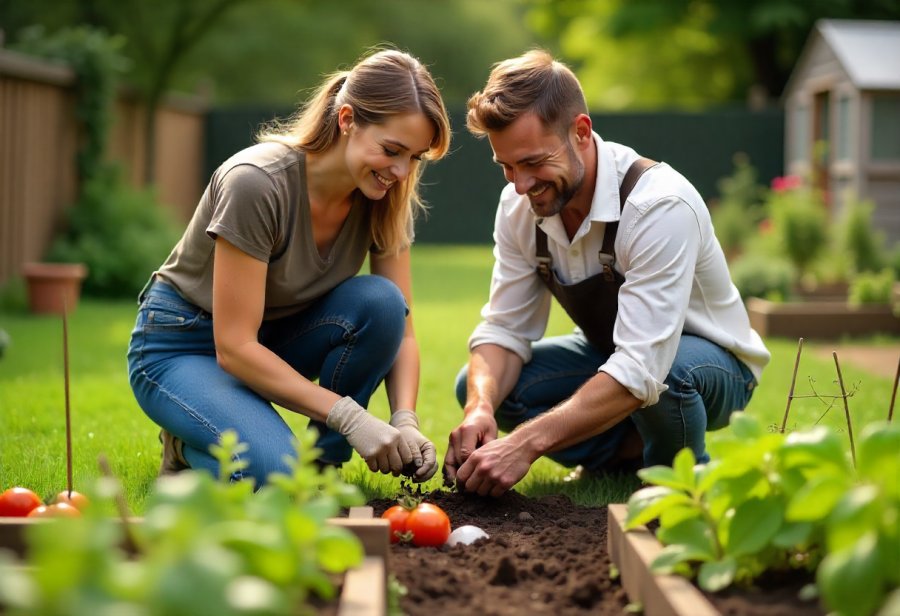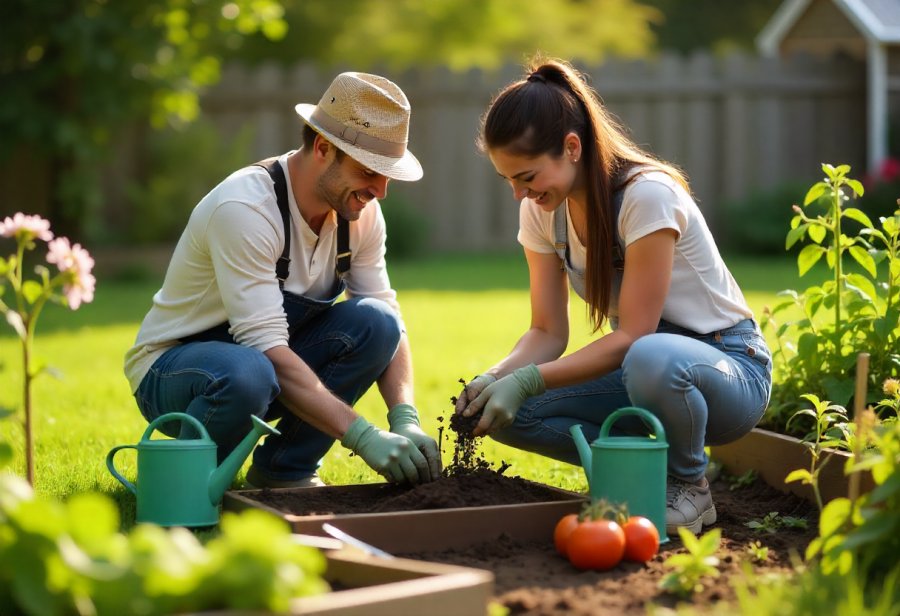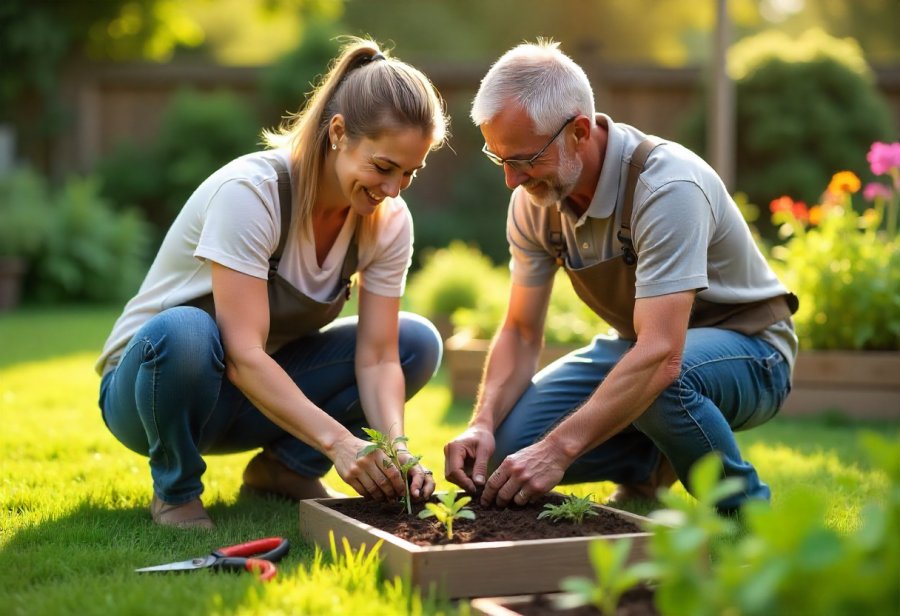
In a world dominated by screens and digital distractions, could shared gardening be the key to unlocking deeper human connections? This compelling exploration reveals how collaborative outdoor activities transform simple acts like planting and watering into powerful rituals of trust, healing, and emotional growth. Historically rooted across cultures and eras—from ancient communal farms to Renaissance botanical gardens—gardening has long served as a universal language of cooperation and cultural exchange. Today, working side by side in the garden not only nurtures plants but also fosters open communication, patience, and vulnerability, strengthening bonds in meaningful ways. Real-life stories illustrate how shared efforts in gardening can rebuild family ties, nurture community resilience, and promote mental well-being. Looking ahead, innovative blends of technology and outdoor activity hold promise for broadening access and deepening these benefits. Can tending to the earth together truly cultivate not just crops, but profound human connection in our busy, digital age?

Reconnect and Heal Through the Power of Shared Gardening
In today’s fast-paced digital world, genuine human connection often feels harder to find. We spend hours scrolling social media, exchanging quick messages, and navigating virtual spaces, leaving little room for truly meaningful interactions. Amid this noise, simple outdoor activities like gardening offer a rare chance to slow down and reconnect, not just with nature but with each other. Tending a garden side by side encourages mindfulness and presence—something screens rarely provide.
Sharing gardening experiences transforms what could be a solitary task into a bonding ritual. It’s more than just planting seeds or watering plants; it’s about creating a shared space where trust and understanding can flourish alongside the greenery. Working together in the dirt fosters open communication, mutual support, and teamwork—elements that deepen emotional bonds naturally. These moments often lead to quiet conversations, shared pride, and vulnerability, strengthening relationships in subtle yet meaningful ways.
Gardening as a collaborative activity also acts as a form of therapy rooted in nature. The physical act of caring for plants reduces stress and calms the mind, but doing it with others amplifies these benefits. It teaches patience, empathy, and respect for each other’s pace and contributions. Watching life grow through shared effort becomes a metaphor for growth in relationships—showing that with care and patience, healing and connection are possible both in nature and between people.
In a world increasingly dominated by digital interactions, outdoor activities like gardening remind us of the importance of tactile, present-moment connection. The act of working in the soil, sharing in the joy of blooming flowers or thriving vegetables, builds trust and understanding that online exchanges often lack. It’s a gentle but powerful reminder that real bonds are cultivated through shared effort and patience, rooted in the natural world and sustained by human presence.
Ultimately, gardening together offers a simple yet profound way to nurture human bonds. It encourages us to slow down, communicate openly, and support each other’s growth—both in the garden and in life. In doing so, we rediscover the timeless value of shared effort and the healing power of nature, proving that connection can flourish even in our busiest, most digital days.
Tracing Gardening’s Roots: A Cultural and Historical Journey
Gardening has served as a universal activity that unites people across different cultures and eras. Throughout history, communities have used planting and harvesting not only for sustenance but also as a way to strengthen social bonds. In ancient Egypt, Mesopotamia, and China, communal gardening was more than a practical task; it was a social event that symbolized cooperation and shared prosperity. These traditions showed that working the land together helped build trust and a collective identity that could endure through generations.
In many Indigenous cultures, gardening is deeply intertwined with spiritual practices and land stewardship. Tending the land isn’t just about growing food—it’s a sacred act that reinforces community bonds and fosters a respectful relationship with nature. These traditions highlight how gardening can serve as a form of cultural expression, passing down knowledge and rituals that deepen collective ties through shared effort and reverence for the environment.
During the European Renaissance and Victorian times, gardening evolved into a leisure activity enjoyed by families and social groups. Elegant estates and botanical gardens became spaces for socializing, learning, and celebrating the beauty of cultivated nature. People exchanged gardening tips, admired exotic plants, and found joy in nurturing living things together. These periods reinforced the idea that gardening isn’t only about utility but also about fostering relationships through shared curiosity and appreciation.
Across these different contexts, gardening has consistently acted as a bridge that unites people. It’s been a means of cooperation, knowledge sharing, and cultural connection. The act of tending to the land—whether for food, beauty, or tradition—serves as a foundation for building trust and resilience within communities. These historical roots remind us that gardening isn’t just about plants; it’s about nurturing human bonds that withstand the test of time.
Today, as mental health challenges and social fragmentation grow, these traditions gain renewed relevance. Engaging in shared outdoor activities like gardening offers a timeless way to foster emotional resilience and connection. Whether through community gardens or family plots, these practices continue to serve as spaces for cooperation, healing, and cultural exchange, proving that the act of nurturing nature is also a way of nurturing ourselves.

Building Trust and Emotional Growth in Collaborative Gardens
Sharing the experience of gardening naturally strengthens bonds and builds trust between people. When working side by side, individuals learn to communicate more effectively, coordinate tasks seamlessly, and support each other’s efforts. This shared effort fosters a sense of teamwork that encourages openness and mutual reliance, creating a safe space for honest conversations. As they nurture plants together, people often find themselves exchanging ideas, solving problems, and celebrating small victories, deepening emotional connections along the way.
Gardening together also teaches patience and empathy. Watching a seed grow into a healthy plant takes time, and this process helps participants respect each other’s pace and contributions. Over shared moments of tending, individuals develop emotional resilience—learning to stay calm during setbacks and to support others through challenges. These qualities extend beyond the garden, helping people navigate disagreements or difficulties in their relationships with greater understanding and compassion.
The act of caring for plants side by side creates a foundation for vulnerability. When people open up about their hopes, worries, or frustrations while working in the garden, it fosters trust and genuine understanding. These shared moments of emotional openness can strengthen bonds, making relationships more authentic and resilient. The garden becomes a metaphor for growth—showing that with patience and care, both plants and human connections can flourish.
Shared gardening also provides a tangible sense of achievement. Seeing a seed sprout or a flower bloom because of collective effort creates feelings of pride and shared purpose. Celebrating these small successes reinforces the idea that growth is a team effort, both in nurturing plants and building relationships. When people experience this kind of joint accomplishment, it deepens their emotional ties and encourages ongoing collaboration.
Beyond the emotional and relational benefits, gardening outdoors offers physical and mental health advantages. Working in nature reduces stress, boosts mood, and enhances overall well-being. Doing these activities with others amplifies these effects, as the shared experience fosters camaraderie and a sense of belonging. The simple act of planting, watering, and tending becomes an act of emotional therapy—calming the mind and strengthening social bonds. In this way, shared gardening becomes a powerful tool for healing and connection, rooted in mutual care and natural growth.
For those interested in enhancing their gardening projects and fostering stronger community bonds, exploring dedicated resources can be incredibly helpful. Learning from expert advice and proven techniques can improve the overall experience and outcomes of shared gardening efforts. You can find valuable information and tips at learning gardening techniques, which supports the ongoing growth and success of collaborative gardens.
Transformative Stories: How Collective Gardening Changes Lives
Shared gardening has a remarkable ability to transform lives, often in ways that words can’t fully capture. Take Lisa and her teenage son, Mark. After a stressful period filled with school pressures and social isolation, they decided to start a small vegetable garden together. What began as a simple hobby quickly evolved into a meaningful ritual — a space where they could reconnect and communicate more openly. Watching tiny seeds sprout and grow into vibrant vegetables gave them a shared sense of achievement, opening new channels for conversation and trust. Mark’s confidence blossomed alongside the plants, while Lisa appreciated the quiet moments of connection amid their busy routines.
In another story, a neighborhood facing personal hardships came together through the creation of a community garden. Working side by side, neighbors found comfort and strength in their shared effort. As they nurtured the plants, trust and friendship grew, turning acquaintances into genuine bonds. These experiences highlight that collective gardening isn’t just about growing food or flowers; it’s about cultivating resilience and community support. The garden becomes a space where stories are shared, skills are exchanged, and social barriers are broken down, all rooted in a common goal.
Many people who engage in shared gardening report a noticeable boost in their emotional well-being. Spending time outdoors, tending plants, and witnessing growth has a calming effect that extends beyond the physical act. When done together, these activities foster camaraderie and a sense of belonging, making the benefits even more profound. Seeing a garden flourish because of joint effort reinforces the idea that growth is a team effort—both in plants and in relationships. These shared successes become symbols of collective effort and mutual care.
Shared gardening also often becomes a space for cultural exchange, especially in diverse communities. Participants from different backgrounds come together, exchanging stories, traditions, and gardening techniques. As they work side by side, barriers dissolve, and a sense of unity develops. These interactions remind us that physical effort and shared purpose can bridge differences in ways words sometimes cannot. The garden transforms into a symbol of hope, cooperation, and the power of community.
Beyond emotional and social benefits, many participants notice tangible improvements in their mental health. Hours spent outdoors, nurturing life, and working in harmony with others reduce stress and promote mindfulness. The act of caring for plants becomes a form of natural therapy, and doing it with others amplifies these effects. The shared experience fosters a sense of belonging, turning a simple activity into a profound source of healing and connection.
These stories speak to the enduring power of collective gardening. Whether it’s rebuilding family bonds, strengthening neighborhood ties, or fostering cultural understanding, these experiences show that tending to plants together can be a catalyst for genuine change. The garden becomes more than a patch of earth—it’s a living reminder that growth, resilience, and connection flourish best when nurtured by many. As more people embrace these shared efforts, the healing potential of gardening continues to grow, offering hope and unity in a fragmented world.

Embracing the Future: Fostering Connection in a Digital Age
As we look ahead, integrating shared gardening into our increasingly digital lives offers promising opportunities to strengthen human connection. Technology, when used thoughtfully, can serve as an extension of outdoor efforts rather than a distraction. Digital platforms—like neighborhood apps or social media groups—can help coordinate planting schedules, share tips, and celebrate milestones, creating a virtual community that complements real-world interactions. These tools keep motivation high and foster a sense of collective purpose, even when physical presence isn’t always possible.
Online workshops and live-streamed gardening classes further expand access, inviting newcomers from diverse backgrounds to experience the emotional and social benefits of tending plants together. These virtual spaces can inspire, educate, and connect people who might lack outdoor space or flexible schedules. When combined with local garden projects or community spaces, they create a hybrid model that maintains the tactile joy of gardening while broadening participation and inclusivity.
Community gardens and urban green spaces will continue to play a crucial role as hubs of connection. Promoting inclusive programs that encourage diverse groups to work side by side helps rebuild social resilience and fosters cultural exchange. These shared spaces become living symbols of cooperation, where people from different walks of life find common ground through collective effort. As participation grows, so does the potential for these gardens to serve as safe, nurturing environments that reinforce trust, empathy, and mutual support.
Supporting these initiatives with outreach and education amplifies their impact. Simple acts—such as inviting neighbors to plant herbs or organizing family planting days—can spark ongoing engagement and nurture a sense of belonging. These small steps remind us that growth begins with shared effort and patience, whether in tending a garden or strengthening community ties. They reinforce the idea that collective action, no matter how modest, plants the seeds for deeper relationships.
Looking forward, the goal isn’t to replace the physical act of gardening but to enhance it through thoughtful innovation. Digital tools should serve as bridges, connecting people and building trust through shared experiences rooted in nature. This balance preserves the intimacy of working side by side while reaching a broader audience, making gardening an accessible and enduring way to foster connection. Embracing this approach can turn outdoor effort into a powerful movement that nurtures resilience, empathy, and community in an ever-changing world.



